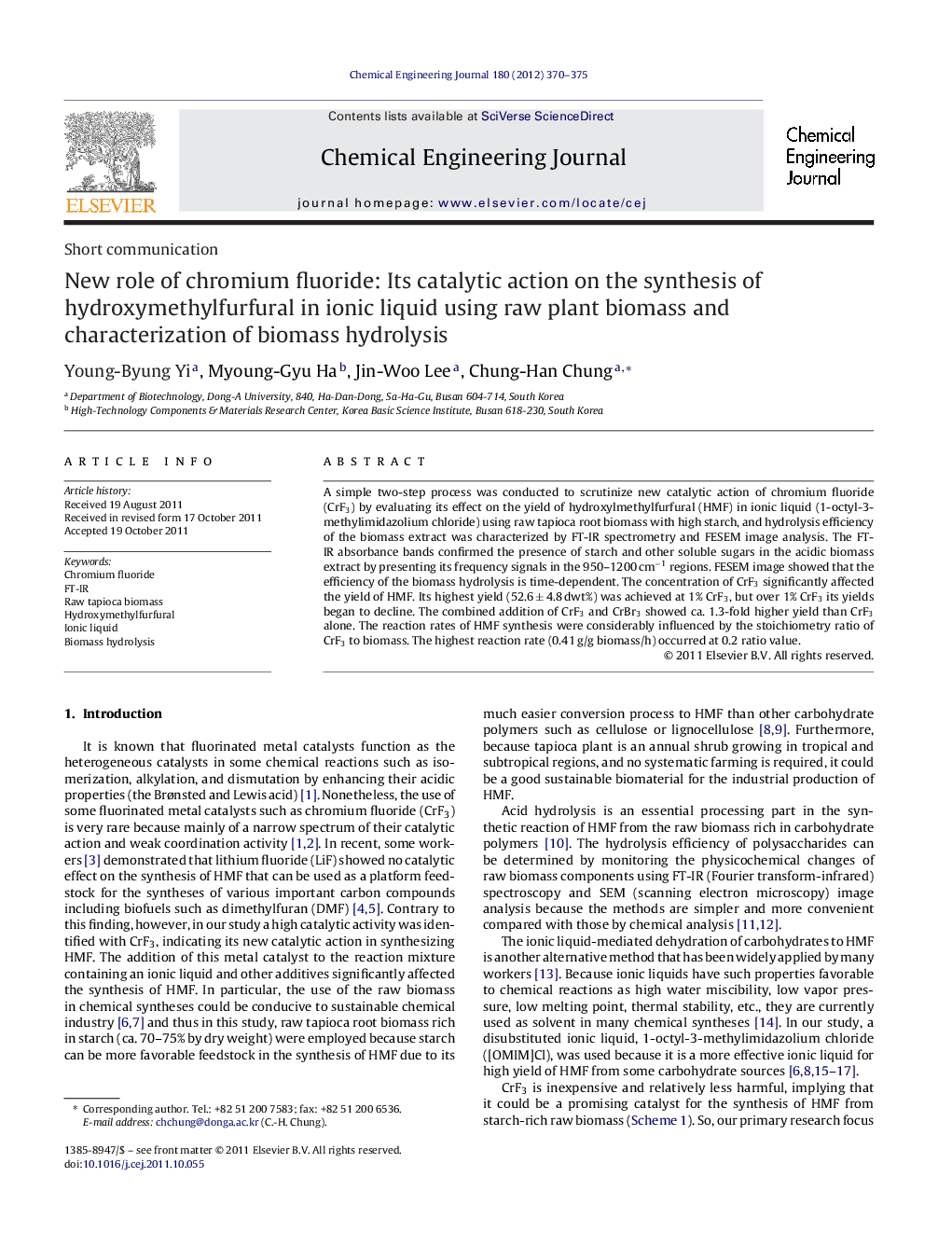| کد مقاله | کد نشریه | سال انتشار | مقاله انگلیسی | نسخه تمام متن |
|---|---|---|---|---|
| 150388 | 456448 | 2012 | 6 صفحه PDF | دانلود رایگان |

A simple two-step process was conducted to scrutinize new catalytic action of chromium fluoride (CrF3) by evaluating its effect on the yield of hydroxylmethylfurfural (HMF) in ionic liquid (1-octyl-3-methylimidazolium chloride) using raw tapioca root biomass with high starch, and hydrolysis efficiency of the biomass extract was characterized by FT-IR spectrometry and FESEM image analysis. The FT-IR absorbance bands confirmed the presence of starch and other soluble sugars in the acidic biomass extract by presenting its frequency signals in the 950–1200 cm−1 regions. FESEM image showed that the efficiency of the biomass hydrolysis is time-dependent. The concentration of CrF3 significantly affected the yield of HMF. Its highest yield (52.6 ± 4.8 dwt%) was achieved at 1% CrF3, but over 1% CrF3 its yields began to decline. The combined addition of CrF3 and CrBr3 showed ca. 1.3-fold higher yield than CrF3 alone. The reaction rates of HMF synthesis were considerably influenced by the stoichiometry ratio of CrF3 to biomass. The highest reaction rate (0.41 g/g biomass/h) occurred at 0.2 ratio value.
► We demonstrated CrF3 is an excellent catalyst in the synthesis of HMF yield from raw tapioca biomass.
► The combination of CrF3 and CrBr3 showed 1.3-fold higher HMF yield than CrF3 alone.
► Hydrolysis of the biomass was efficiently monitored by FT-IR and FESEM analysis.
► The key frequency of its hydrolysis was identified in 950–1200 cm−1 region by FT-IR.
► The highest reaction rate (0.41 g/g biomass/h) occurred at 0.2 ratio value.
Journal: Chemical Engineering Journal - Volume 180, 15 January 2012, Pages 370–375